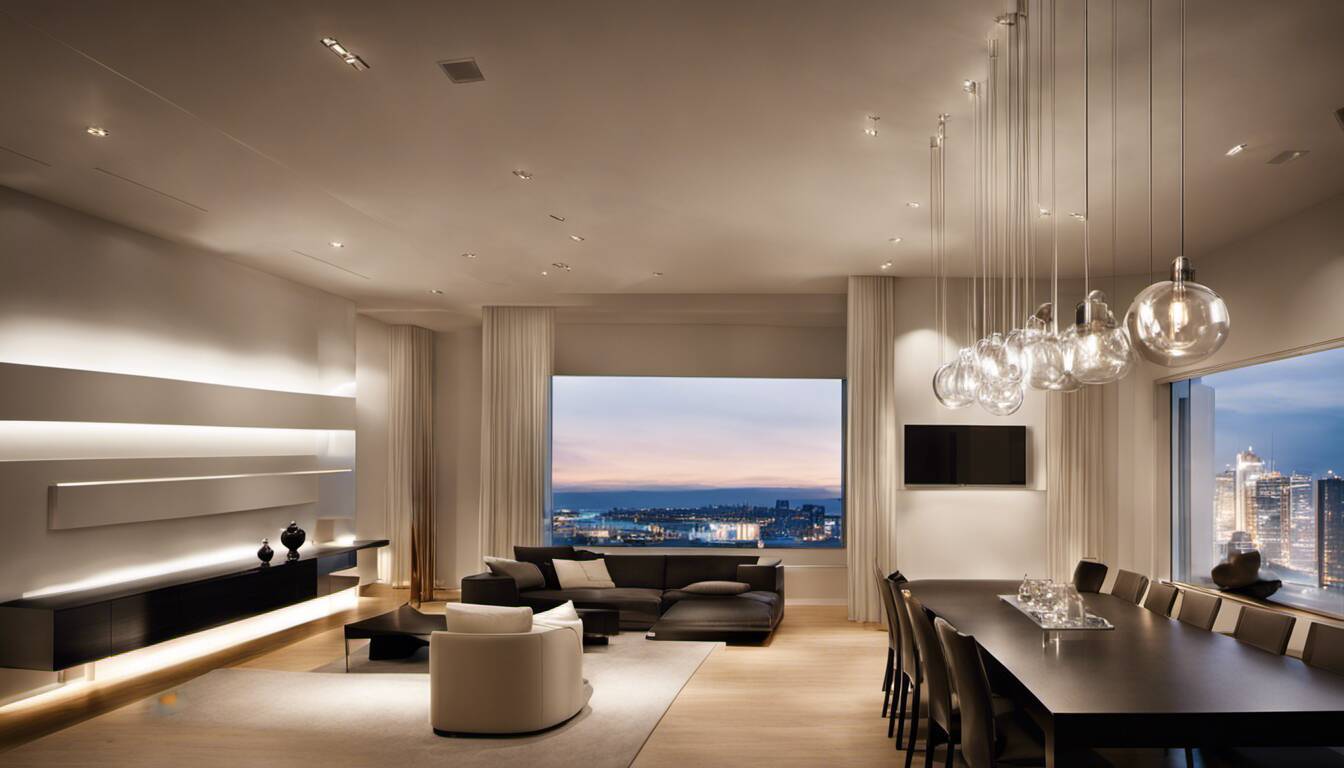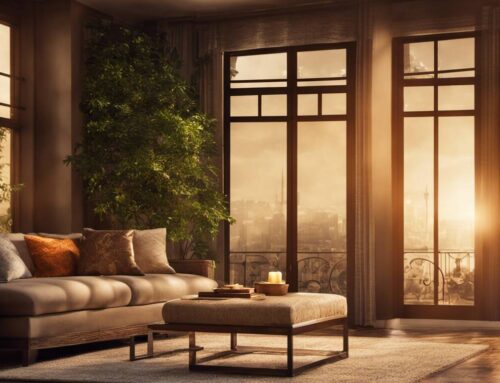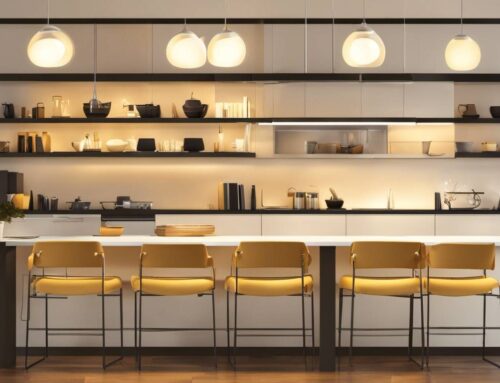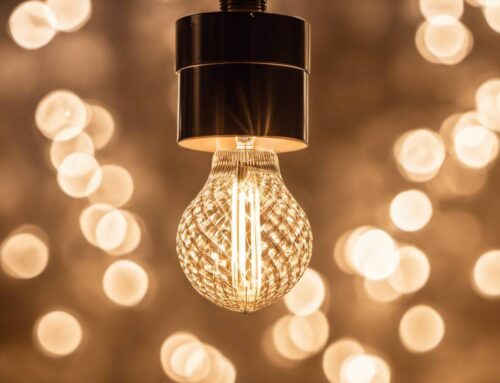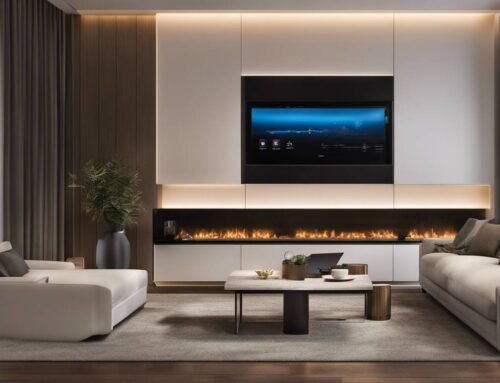Are you looking to illuminate your space but unsure which type of lighting is best suited for your needs? You’re not alone. Lighting plays an essential role, from impacting our mood to enhancing productivity and even influencing sales in retail businesses. Unearth the vast universe of lights with us, as we delve deep into the various types of lighting, their unique features, and where they shine the brightest in this comprehensive guide. Distinguish between LED, Incandescent, Fluorescent lights and more – all under one digital roof! Stay tuned and let’s light the path together towards a brilliantly illuminated future.
There are three main types of lighting: ambient or general lighting, accent lighting, and task lighting. Ambient lighting provides overall illumination for a space and can be used for comfortable movement, while accent lighting creates visual interest by drawing attention to specific design elements. Task lighting, on the other hand, is localized light that’s bright enough to perform specific tasks, such as cooking or reading. The appropriate use of these three types of lights can elevate the aesthetics and functionality of a space. Examples of application include using ambient lighting in living rooms, bathrooms, and dining areas; adding accent lighting to highlight artwork or architectural features; and providing task lighting for activities like reading or working at a desk.
Types of Lighting
In creating a well-designed and functional space, understanding the different types of lighting is fundamental. There are three basic types of lighting: ambient or general lighting, accent lighting, and task lighting. Each type serves a specific purpose and can greatly enhance the overall ambiance and functionality of a room.
Ambient Lighting
Ambient lighting, also known as general lighting, is the foundation of any well-lit space. It provides an overall glow to a room, sets the tone, and allows for comfortable and safe movement. It can also double as task lighting depending on its intensity and placement.
Imagine walking into a living room that is softly illuminated by recessed pot lights installed in the ceiling. This ambient lighting fills the entire space with a warm and inviting glow, making it suitable for relaxing activities like reading or watching TV. In this scenario, the ambient lighting serves both decorative and functional purposes.
When considering ambient lighting options, it’s important to evaluate the size of the room, ceiling height, color scheme, and natural light sources. These factors will help determine the number of light fixtures required and their placement to achieve uniform illumination throughout the space.
Understanding how different light sources contribute to ambient lighting is crucial. Overhead fixtures like chandeliers and pendant lights are commonly used for ambient/general lighting in larger rooms where they can provide adequate illumination from above.
While a single central fixture could be sufficient for some spaces, strategically placed ceiling-mounted fixtures such as track or recessed lighting can ensure even distribution of light in others.
Consider a kitchen with a large island where family and friends often gather. Pendant lights suspended over the island not only provide an additional layer of ambient lighting but also become a visual focal point in the room.
It’s worth noting that natural light sources should also be taken into account when planning ambient lighting. Large windows or skylights can significantly contribute to the overall illumination during the day, reducing the reliance on artificial lighting.
The right choice of bulbs for ambient lighting is crucial. LED bulbs are often recommended as they produce a direct and even light, don’t emit UV light, and are energy-efficient. This makes them ideal for creating a comfortable and well-lit environment.
Now that we have explored ambient lighting, let’s move on to discussing the next type: task lighting.
Task Lighting
Task lighting plays a pivotal role in providing localized illumination for specific activities, enhancing productivity, and preventing eye strain. Whether it’s reading a book, cooking in the kitchen, or working at a desk, the right level and placement of task lighting are crucial.
For example, think about the focused light emitted by a desk lamp that illuminates your workspace while you’re studying or working on important documents. The brightness and directionality of task lighting should be tailored to the specific activity being performed.
When considering task lighting, it’s essential to take into account factors such as age and visual requirements. Older individuals may require brighter task lighting to compensate for age-related vision changes. Additionally, task lighting should be positioned to minimize shadowing and glare, ensuring optimal visibility without causing discomfort.
Picture yourself reading your favorite novel on a cozy recliner with a well-placed floor lamp casting a warm glow over the pages. The lack of glare allows you to indulge in a captivating story without straining your eyes. That’s the power of effective task lighting.
Some common examples of task lighting fixtures include desk lamps, under-cabinet lights in kitchens, pendant lights above islands or countertops, and track lights directed towards workstations. These fixtures provide ample brightness to enhance visual clarity and make tasks more manageable.
In recent years, LED bulbs have gained popularity for task lighting due to their energy efficiency and longevity. LED bulbs are known for producing cool white light that closely resembles natural daylight, creating an ideal environment for cognitive tasks like reading or studying.
Now that we’ve explored task lighting and its significance in providing focused illumination for various activities let’s turn our attention to accent lighting.
Accent Lighting
Accent lighting serves as an artistic tool in interior design, emphasizing architectural features, artworks, or decorative elements within a space. Its strategic placement can create focal points and highlight specific areas with enhanced illumination, drawing attention to the desired features.
To put it into perspective, imagine a gallery showcasing stunning sculptures. Picture wall-mounted picture lights or adjustable track lights carefully illuminating these masterpieces from various angles. The contrast created by accent lighting intensifies the visual impact and directs the viewer’s gaze towards the artwork.
When considering accent lighting, it’s crucial to understand that it should provide at least three times more light on the focal point than on the surrounding area. This creates a noticeable distinction and adds depth and dimension to a room.
Accent lighting can be achieved through various fixtures, such as track lights that can be adjusted to highlight multiple objects or recessed lighting used to create grazing effects on textured walls. Wall sconces can also serve as effective sources of accent lighting, bringing emphasis to paintings or architectural details.
Imagine walking into an opulent hotel lobby with immaculate architecture and a grand chandelier casting a magnificent glow over the space. The combination of ambient and accent lighting captivates your attention, creating an atmosphere of luxury and elegance.
The possibilities with accent lighting are endless. It allows for creativity in design and adds mood-enhancing elements to any setting. With the right positioning and intensity of light, accent lighting can truly transform a space from ordinary to extraordinary.
- According to a report by MarketWatch, the global LED lighting market is expected to reach an estimated $33.1 billion by 2023, displaying an expansion of its application in various sectors.
- The U.S Department of Energy reported in 2020 that LED bulbs can use up to 75% less energy than traditional incandescent bulbs and last up to 25 times longer.
- A study conducted by the Lighting Research Center found that a well-designed task lighting environment can improve productivity rates by as much as 20%.
Indoor and Outdoor Lighting Applications
Lighting plays a crucial role in enhancing the aesthetics, functionality, and overall ambiance of both indoor and outdoor spaces. Let’s explore how lighting is applied in various settings to create the desired atmosphere and meet specific needs.
Indoor lighting applications encompass a wide range of spaces such as homes, offices, retail stores, restaurants, and more. Different types of lighting fixtures and techniques are employed to achieve various effects and fulfill specific requirements.
In residential settings, for example, ambient or general lighting provides an overall glow to a room, sets the tone, and allows for comfortable and safe movement. It can also double as task lighting. This type of lighting is typically achieved through overhead fixtures like recessed pot lights and chandeliers, as well as floor and table lamps.
Imagine walking into a cozy living room illuminated by soft ambient lighting that casts a warm glow throughout the space. The carefully arranged floor lamps and strategically placed table lamps provide just the right amount of light for relaxation or engaging in activities like reading or hosting guests.
Commercial spaces also benefit greatly from innovative lighting solutions. In offices, appropriate task lighting helps improve productivity while reducing eye strain. Recessed lights or track lighting are often used for general illumination, while desk/task lamps provide localized task lighting.
Now that we’ve explored the broad spectrum of indoor lighting applications, let’s narrow our focus on its use in residential settings specifically.
- Lighting is a crucial element in enhancing aesthetics, functionality, and ambiance in various indoor and outdoor settings. Different types of lighting fixtures and techniques are utilized to achieve specific effects and meet distinct needs. In residential settings, ambient lighting provides an overall glow to a room, sets the tone, and allows for comfortable and safe movement while also doubling as task lighting. In commercial spaces like offices, appropriate task lighting helps improve productivity while reducing eye strain. Overall, innovative lighting solutions can greatly benefit both residential and commercial spaces.
Residential Lighting Uses
Within homes, lighting serves distinct purposes, ranging from creating functional workspaces to setting moods for relaxation or entertainment. Various rooms within a residence necessitate different types of lighting.
In the kitchen, task lighting plays a pivotal role in ensuring efficient food preparation and cooking. Bright illumination is required to see clearly while chopping vegetables or reading recipes. Under-cabinet lights provide focused task lighting directly onto countertops, making meal preparation safer and more enjoyable.
Picture a modern kitchen adorned with sleek pendant lights hanging gracefully above a spacious island. The pendant lights not only enhance the overall aesthetic appeal but also provide targeted lighting for activities like chopping ingredients or enjoying a casual breakfast.
Bedrooms often require a blend of ambient and task lighting to create a soothing and tranquil atmosphere for rest and relaxation. Table lamps on nightstands or wall sconces can offer personalized, dimmable lighting options that meet individual preferences.
Think of it as the difference between harsh fluorescent lighting in an impersonal office space versus the soft glow of bedside table lamps that create an intimate and comforting ambiance for winding down after a long day.
Bathrooms present unique challenges due to the need for both functional task lighting for daily grooming routines and flattering ambient lighting for applying makeup or styling hair. Recessed lights provide ample general lighting, while vanity lights on either side of the mirror minimize shadows on the face, ensuring optimal visibility during grooming tasks.
As we continue our exploration of lighting applications, we’ll now shift our attention to the world of commercial settings, examining how lighting is utilized efficiently in various industries.
Commercial Lighting Uses
Commercial spaces require different lighting setups to cater to various functions and create the desired ambiance. Let’s explore some common applications of commercial lighting:
- Retail Stores: Retail spaces utilize a combination of general and accent lighting. General lighting ensures overall visibility and comfort for shoppers, while spotlighting specific areas with accent lighting draws attention to products and displays.
- Offices: In office settings, a balance between general ambient lighting and task lighting is crucial. Adequate general lighting reduces eyestrain and creates a conducive work environment, while task lighting at individual workstations helps improve focus and productivity.
- Restaurants: Restaurants often aim for an inviting atmosphere by incorporating warm ambient lighting with dimmers, creating a cozy and intimate setting. Accent lighting can be used to highlight artwork or featured elements in the space.
- Hotels: Hotels utilize lighting to establish their overall aesthetic and create a welcoming environment for guests. Ambient lighting in lobbies, hallways, and common areas creates a sense of luxury, while task lighting in rooms provides functionality for reading or working.
- Galleries/Museums: Art galleries and museums rely heavily on accent lighting to enhance exhibits and artwork. Directional spotlights can be used to draw attention to specific pieces, while ambient lighting maintains an overall illuminance level.
- Hospitals: In healthcare facilities, lighting plays a critical role in providing comfort and supporting medical tasks. A combination of ambient, task, and functional lighting must be carefully planned to ensure proper visibility for staff, patients, and visitors.
- Educational Facilities: Schools and universities require adaptable lighting solutions to accommodate various activities such as lectures, presentations, and group work. A mix of general overhead lighting, natural light sources, and task lights in classrooms helps facilitate learning environments.
By understanding the different uses of commercial lighting in various settings, you can make informed decisions when choosing the right lighting fixtures.
Choosing the Right Lighting Fixtures
When selecting lighting fixtures for commercial spaces, several factors come into play. Consider the following aspects to ensure your chosen fixtures meet the requirements of your space:
- Function: Determine the purpose of each area or room and select lighting fixtures accordingly. For example, if you need bright task lighting for workstations, desk lamps or under-cabinet lights may be suitable. If you want to accentuate architectural features, spotlights or wall sconces can add drama and focus.
- Style: Consider the overall design aesthetic of your space and choose fixtures that complement it. Whether your style is modern, classic, or industrial, there are lighting options available to suit your preferences and enhance the visual appeal of your environment.
- Size and Scale: Ensure that the size of the fixture is proportionate to the space it occupies. A large chandelier may be a statement piece in a grand ballroom, but it could overwhelm a smaller room or hallway. Pay attention to scale to maintain a balanced and harmonious look.
- Light Output: Assess the desired light levels for each area and choose fixtures with appropriate brightness. Different rooms may require different levels of illumination based on their function. For example, task areas like kitchens or offices may benefit from brighter light than ambient areas such as lounges or waiting rooms.
- Energy Efficiency: In today’s environmentally conscious era, it’s important to consider energy-efficient lighting options. LED bulbs are recommended for their energy efficiency and longevity. They consume less energy compared to traditional incandescent bulbs while providing bright illumination.
- Maintenance and Lifespan: Evaluate the maintenance requirements and lifespan of lighting fixtures before making a decision. Opt for fixtures that are durable, easy to clean, and have long lifespans to reduce replacement costs and minimize disruptions in commercial settings.
By keeping these factors in mind, you can select lighting fixtures that not only fulfill the functional requirements of your commercial space but also contribute to its aesthetic appeal.
Energy Efficiency in Lighting Choices
In today’s world, energy efficiency is a crucial consideration in all aspects of our lives, and lighting is no exception. As architects and designers strive to create sustainable and environmentally-friendly spaces, selecting the right lighting choices becomes essential. Energy-efficient lighting not only helps reduce electricity consumption but also contributes to lower utility bills and a healthier planet.
One of the most popular energy-efficient lighting solutions utilized today is LED (Light Emitting Diode) technology. LEDs provide immense benefits over traditional incandescent or fluorescent bulbs in terms of energy savings. They consume significantly less electricity while producing bright and focused illumination. With longer lifespans compared to traditional bulbs, LEDs also reduce maintenance costs and waste.
By replacing old incandescent and fluorescent fixtures with more efficient LED lights, individuals and businesses can achieve substantial energy savings. For example, a 60-watt incandescent bulb can be replaced with an equivalent LED bulb that consumes only 9 watts while delivering the same level of brightness. This simple swap not only reduces energy consumption but also extends the lifespan of the light fixture.
Let’s consider an office space that undergoes a lighting retrofit by replacing traditional fluorescent tube lights with energy-efficient LED panel lights. The initial investment in upgrading may seem steep, but the long-term benefits are significant: reduced energy consumption by up to 50-60%, lower maintenance costs due to longer product lifespan, and improved workplace productivity as LED lighting produces vibrant and flicker-free illumination.
It’s important to note that energy efficiency is not solely dependent on the type of light source used, but also on other factors such as controls and design. Incorporating smart lighting controls is another effective way to enhance energy efficiency. These intelligent systems enable personalized control over lighting levels based on occupancy or ambient light conditions, ensuring lights are only used when needed.
Daylight harvesting is another innovative approach to maximize energy efficiency in lighting choices. It involves integrating natural daylight with artificial lighting to create well-lit spaces while minimizing electricity usage.
Daylight harvesting systems utilize sensors and controls to automatically adjust the intensity of artificial lighting based on the available natural light. For example, in a room with ample sunlight coming in through windows, the artificial lights will dim or switch off entirely, maximizing energy savings. When the natural light diminishes or during nighttime hours, the artificial lights will gradually brighten to maintain optimal illumination levels.
Think of it as a dance between the sun and technology; harnessing natural light as it waltzes in and smoothly transitioning to artificial light when necessary.
By capitalizing on daylight, businesses and homeowners can significantly reduce their environmental impact and energy costs. Additionally, studies have shown that integrating natural light into work environments positively impacts employee satisfaction and productivity, creating a win-win situation.
When choosing lighting options for any space, whether residential or commercial, it is important to consider energy efficiency as a primary factor. LED technology, smart lighting controls, and daylight harvesting systems are just some of the ways to achieve this goal. By embracing these solutions, individuals and organizations can create sustainable, cost-effective, and environmentally-friendly lighting environments that benefit both them and the planet.
